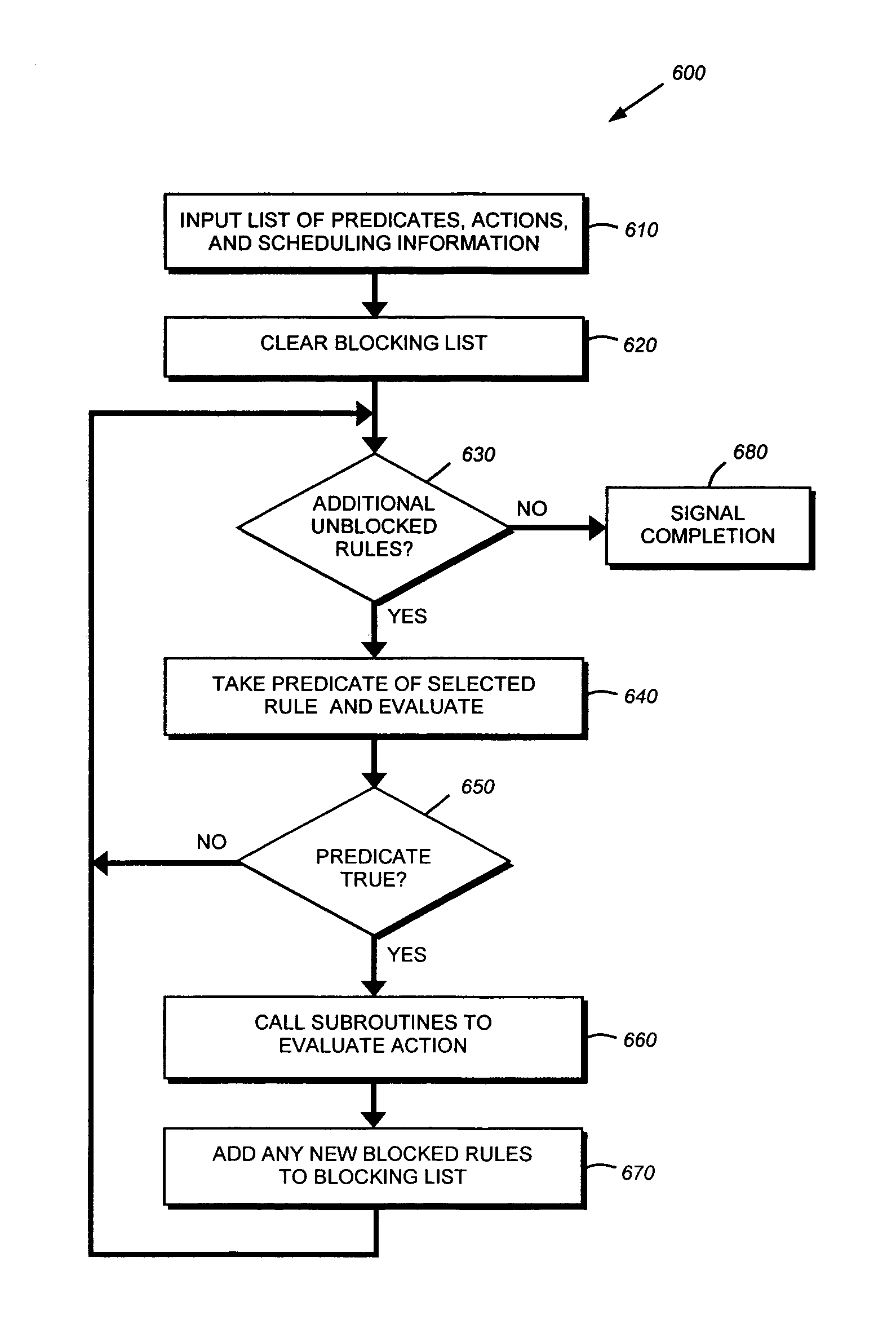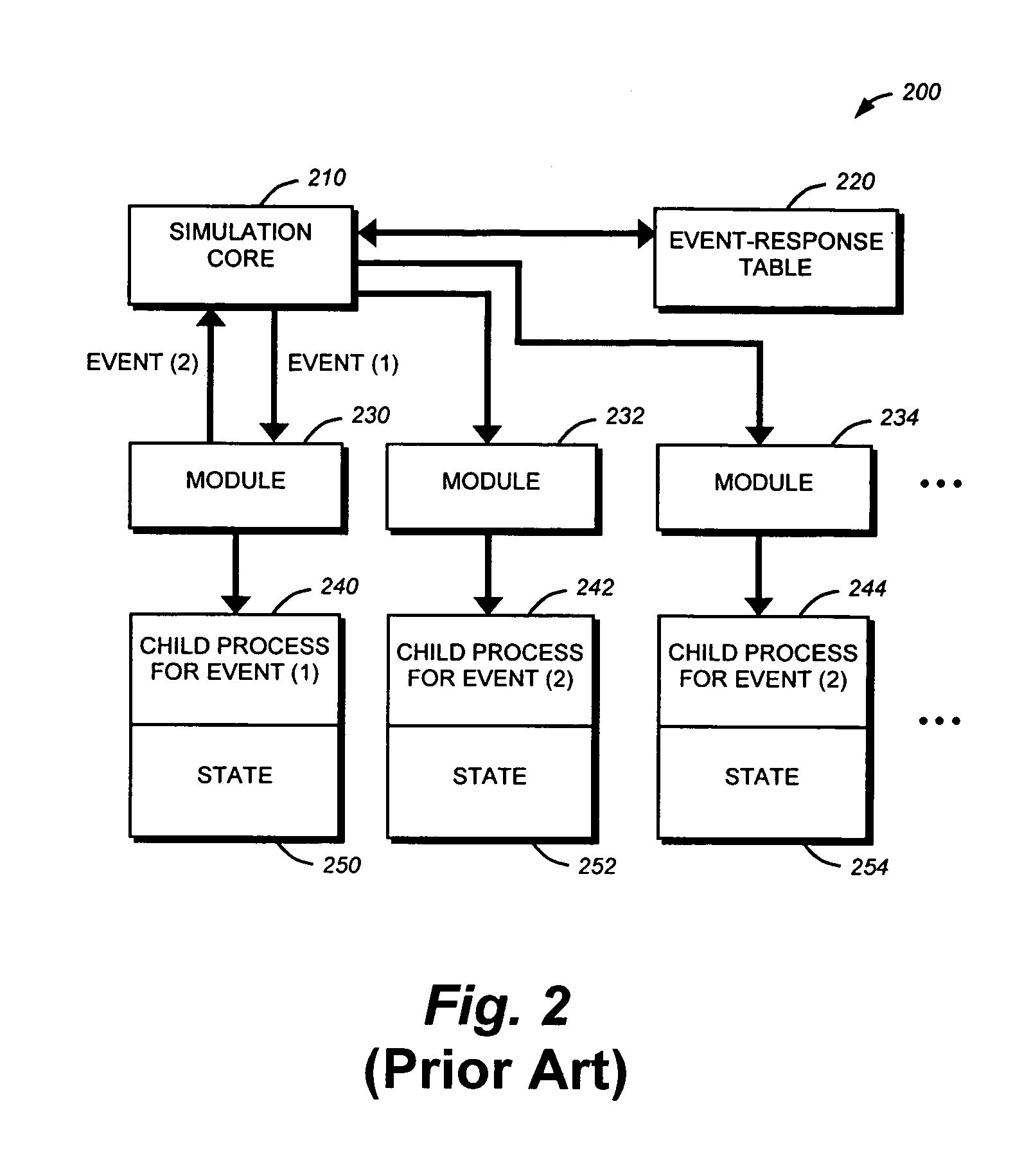System and method for controlling simulation of hardware in a hardware development process
a hardware development process and hardware technology, applied in the direction of program control, cad circuit design, instruments, etc., can solve the problems of increasing complexity of digital circuits, and increasing limitations of conventional hdls such as verilog and vhdl
- Summary
- Abstract
- Description
- Claims
- Application Information
AI Technical Summary
Benefits of technology
Problems solved by technology
Method used
Image
Examples
Embodiment Construction
[0048]FIG. 3 depicts a circuit simulation process or system 300, according to an illustrative embodiment of this invention, which accepts an asynchronous circuit specification 310 and produces executable code 330 that models a synchronous digital circuit. The circuit simulation system 300 includes a Term Rewriting System Compiler (TRSC) 320 that interprets the asynchronous circuit specification 310 and performs a series of operations described further below. Executable code 330 may thereafter be executed by a code simulator 340 that combines the code with a runtime executive 370 that includes input interfaces, output interfaces, data checking and testing tools suited for verification of a simulation a synchronous digital circuit. Further, executable code 330 may be combined with a library 360 of primitive objects that contains signal timing information useful for simulation. Typical primitive objects include a variety common logic gates, such as, and or gates, and operators such as ...
PUM
 Login to View More
Login to View More Abstract
Description
Claims
Application Information
 Login to View More
Login to View More - R&D
- Intellectual Property
- Life Sciences
- Materials
- Tech Scout
- Unparalleled Data Quality
- Higher Quality Content
- 60% Fewer Hallucinations
Browse by: Latest US Patents, China's latest patents, Technical Efficacy Thesaurus, Application Domain, Technology Topic, Popular Technical Reports.
© 2025 PatSnap. All rights reserved.Legal|Privacy policy|Modern Slavery Act Transparency Statement|Sitemap|About US| Contact US: help@patsnap.com



